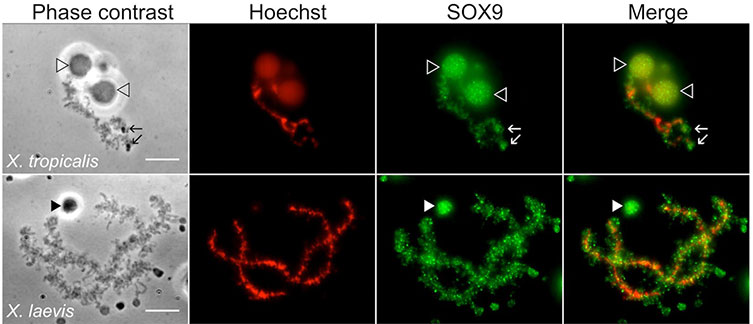Resources
 Part of the Oxford Instruments Group
Part of the Oxford Instruments Group
Expand
Collapse
 Part of the Oxford Instruments Group
Part of the Oxford Instruments Group
X. tropicalis is a small ~5 cm, flattened-body frog with small eyes commonly found in subtropical lowland forests and rivers throughout West Africa. In the biology laboratory X. tropicalis are used for many developmental studies and are a popular model organism because they are easy to look after, fully aquatic and ideal for shorter timescale studies due to their generation time of 4 – 6 months. Much shorter compared with their relative X. laevis which has a generation time of ~12 months. X. tropicalis has diploid genome and a unique evolutionary position that covers both amphibian and mammalian aspects. These traits make X. tropicalis an especially useful model organism and it can be used to gain insights into the role of the conserved regions that lie outside of transcribed regions. Large libraries of mRNA transcripts are available which open up research possibilities for numerous studies.
X. tropicalis has been used for studies such as comparative genetics for vertebrate developmental biology studies, embryonic development and general cell biology studies. [1] Andor offer a range of imaging solutions that should prove effective for studies involving X. tropicalis. To study processes over a wide field of view or dynamic processes sCMOS cameras would generally be the preferred option. For the lowest light conditions, or for deeper tissue imaging iXon EMCCD cameras would provide the ultimate sensitivity.

Figure 3: X. tropicalis and X. laevis images under phase contrast, and with Hoechst and SOX9 imaged with an Andor iXon EMCCD and analysed using IMARIS software. Image reproduced from Penrad-Mobayed et al.
References:
Learn More from the Model Organism Series
Date: February 2019
Author: Dr Alan Mullan & Dr Aleksandra Marsh
Category: Application Note
